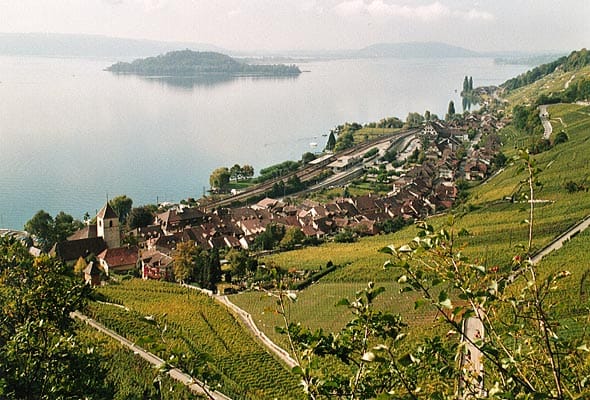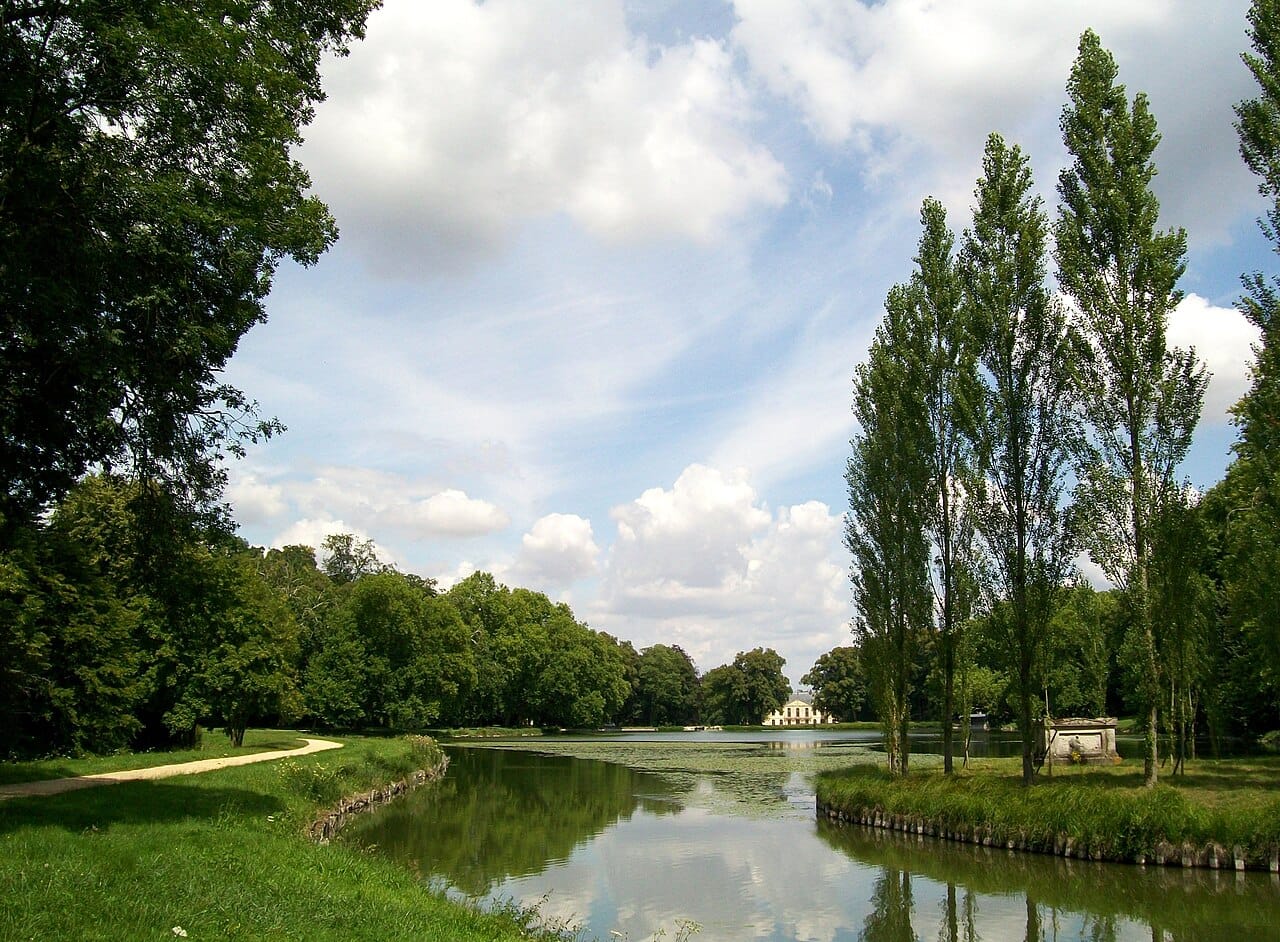St. Petersinsel and the Isle of Poplars
I associate Rousseau with two places. Not Geneva or the towns around the lake associated with Julie, or the New Héloïse (Vevey, Clarens, Meillerie), or Montmorency near Paris where he wrote Émile and Of The Social Contract, or Les Charmettes near Chambéry (in Savoy) from earlier in his life with Madame de Warens. You can find statues and plaques and museums all over these places.
The two places are both small islands - a useful metaphor for Rousseau's life and writings. After all, the one book he allows Émile to read before the age of 12 is Defoe's Robinson Crusoe.

The first photo shows St. Petersinsel, above, which is an island in Lake Biel (Bielersee), in western Switzerland. Nowadays it is joined to the mainland (at back of photo) because the lake water level has dropped. Rousseau and Thérèse stayed here for two months in 1765, and he wrote a decade later in The Reveries of the Solitary Walker that this was the happiest time of his life. Maybe it was. They stayed in an 11th century monastery that is now a hotel. However, true to form, the Genevan authorities heard he was there and the Bernese authorities banished him from Switzerland. He never returned.
The other location is where Rousseau spent the last weeks of his life in 1778: Ermenonville, north of Paris, near Chantilly. In the park is the Isle of Poplars, where Rousseau's tomb lies - shown below - although his remains were moved to the Panthéon in Paris in 1794. Thérèse would remain in this area until her death in 1801 at the age of 79. Does the spirit of the dead persist in the living?
But it is not in the words, it is not said, it is all among the words, like the morning mist at Chantilly...

In Germany, they thought so. They built a replica of the Isle of Poplars in the Tiergarten park in Berlin in 1797 (it was more of a memorial than a replica really). Called Rousseau-Insel (Rousseau's Island), it is still there today - a nice quiet spot. Originally it had a memorial column, later lost, so a new column was sculpted for it by Günter Anlauf in 1987.
